16 Dec. 2015
http://childpsychiatryassociates.com/?p=1892 Voynich Manuscript Origins – Does Sagittarius Hold Clues?
In a previous post, from July 2013, I summarized zodiac symbols that are illustrated in the Voynich Manuscript (Beinecke 408) and included examples of symbols from other manuscripts.
Since then I’ve collected many more examples, far too many to include in one post, so I’ll constrain this one to Sagittarius, the archer, because, as I mentioned previously, it is somewhat unusual for Sagittarius to be represented with legs and a crossbow when the actual constellation is typically a centaur with a long bow.
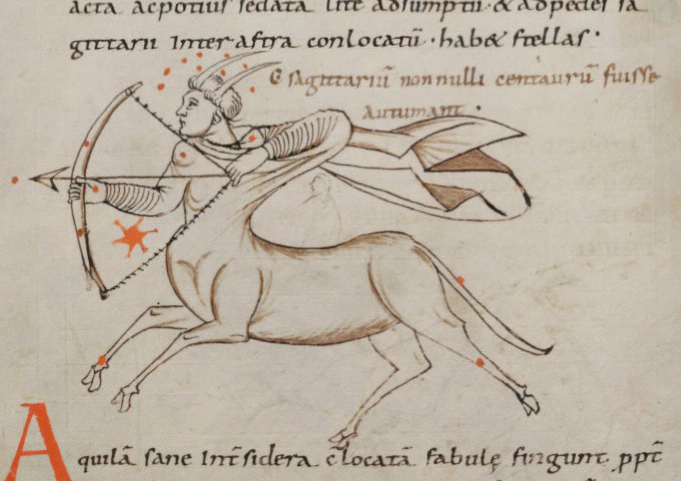 Examples of Sagittarius as a centaur are far more frequent, such as this one (left) from Codex Sang. 250. And, with the exception of a rare example from Israel in the 6th century, most of those with legs occur between 1395 and the late 1400s, the same approximate time as the creation of the VM manuscript.
Examples of Sagittarius as a centaur are far more frequent, such as this one (left) from Codex Sang. 250. And, with the exception of a rare example from Israel in the 6th century, most of those with legs occur between 1395 and the late 1400s, the same approximate time as the creation of the VM manuscript.
If we further narrow the examples to those with both legs and crossbows, then only a handful remain. To make it easier to understand the importance of these examples, I created a chart which shows the extents of the Roman Empire in the late 1300s overlaid with Sagittarius symbols. This made it easier to visualize the approximate origins and dates of creation of the ones drawn with legs
I felt it was important to include the political boundaries of the Holy Roman Empire because it provides context. I was not specifically looking for zodiac symbols in this region, I sought out every Sagittarius with legs that I could find, but discovered after collecting them that they had commonalities not only in attire, but in geography. It’s probable that others may surface that have never been digitized and uploaded to the Web but until that happens, one has to work with what is available.
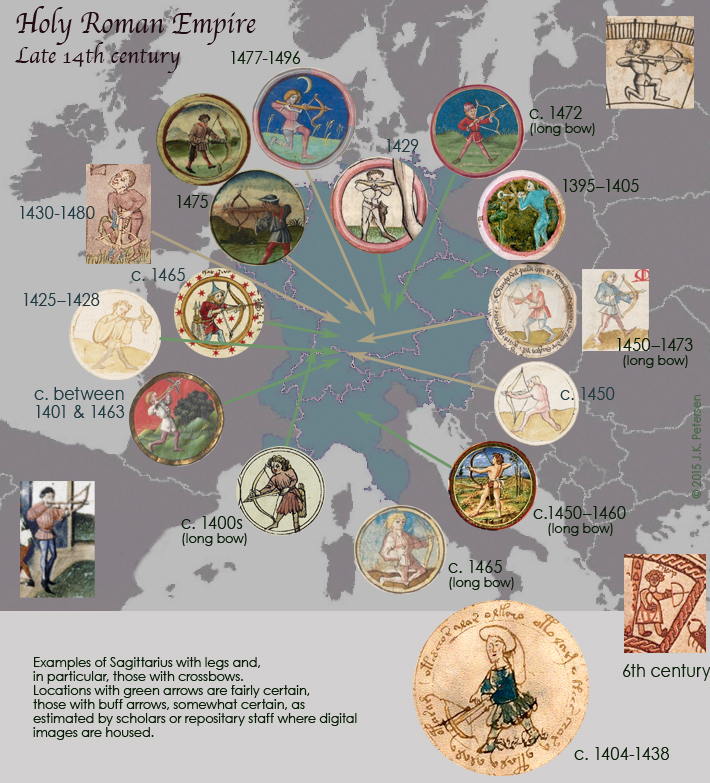 The above chart illustrates Sagittarius with legs from a variety of documents. The one in the upper right was pasted into a manuscript and may not originate at the same time or place, but was probably created sometime before 1468.
The above chart illustrates Sagittarius with legs from a variety of documents. The one in the upper right was pasted into a manuscript and may not originate at the same time or place, but was probably created sometime before 1468.
The image in the lower left of the chart is technically not a zodiac symbol, although the volume from which it originates has astrological references. I included it because it resembles some of the zodiac drawings and might provide a clue as to why crossbows appear in zodiacs. The painting is from the Netherlands and shows a crossbow tournament. It occurred to me that the popularity of the crossbow for warfare and for competition may have inspired drawings of Sagittarius for a brief period of about three decades.
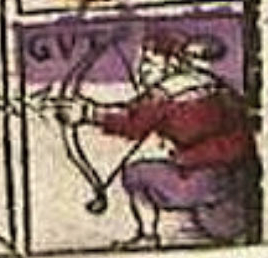 I didn’t include this image of the archer squatting because it’s from a fragment that has been assembled with a longer document, but it is assumed to be from Germany, with an estimated date of about 1457 or earlier. By the mid-1400s, most of the Sagittarius symbols had reverted to longbows and, by the 1500s, the legged version of Sagittarius had almost disappeared (other than obvious copies from older texts). Most of the examples that include crossbows are from the early to mid-1400s.
I didn’t include this image of the archer squatting because it’s from a fragment that has been assembled with a longer document, but it is assumed to be from Germany, with an estimated date of about 1457 or earlier. By the mid-1400s, most of the Sagittarius symbols had reverted to longbows and, by the 1500s, the legged version of Sagittarius had almost disappeared (other than obvious copies from older texts). Most of the examples that include crossbows are from the early to mid-1400s.
Note that the examples I’ve located so far tend to be from the same general region. Most are within the Holy Roman Empire, near to what is now the border between Germany and Switzerland. An early one appears to originate in Czech. The legged symbols from Israel and Italy are longbows.
The zodiac symbols in the VM do not appear to be copied from one specific source. If they are, that source has not yet turned up on the Web or may no longer exist. At least for now, it appears that the VM illustrator was inspired by a number of sources. Clearly Beinecke 408 is not a work of pure fantasy—many parallels to European culture are evident.
order ivermectin online Location Clues
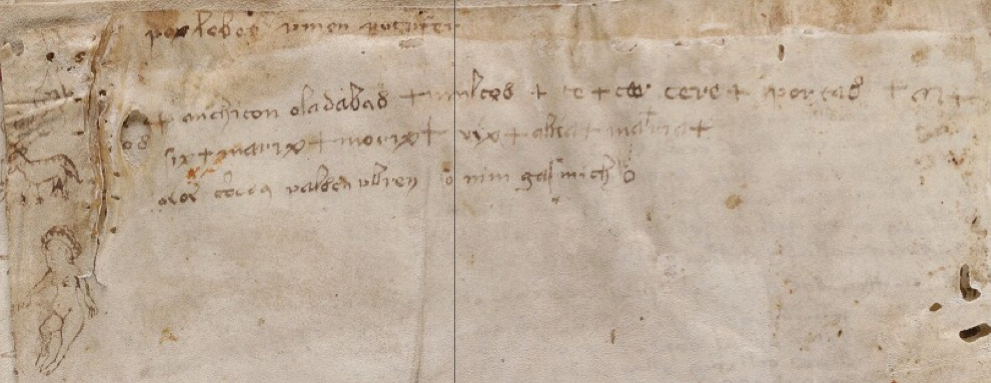 What is most significant about the Sagittarius crossbowmen is that they originate from a fairly specific time period (clustering around the 1420s to about 1475) and a fairly specific area of central Europe, the same region that matches the handwriting found in the marginal notes and on the last page of the VM (I refer to this handwriting as second script because there’s no definite evidence yet that the VM author (first script) and the author of the Germanic/Latin text on the last page are the same person—there are significant differences in the handwriting).
What is most significant about the Sagittarius crossbowmen is that they originate from a fairly specific time period (clustering around the 1420s to about 1475) and a fairly specific area of central Europe, the same region that matches the handwriting found in the marginal notes and on the last page of the VM (I refer to this handwriting as second script because there’s no definite evidence yet that the VM author (first script) and the author of the Germanic/Latin text on the last page are the same person—there are significant differences in the handwriting).
We also don’t know for certain whether the person who created the drawings is the same as the person who added the text. It probably is, but it should not be assumed that only one person authored the manuscript. In fact, it appears that the paint may have been added by someone other than the person who drew the lines, given that the lines are fairly careful and the painting rather sloppy, so we have to keep open to the possibility that the artist and author may be different people, as well.
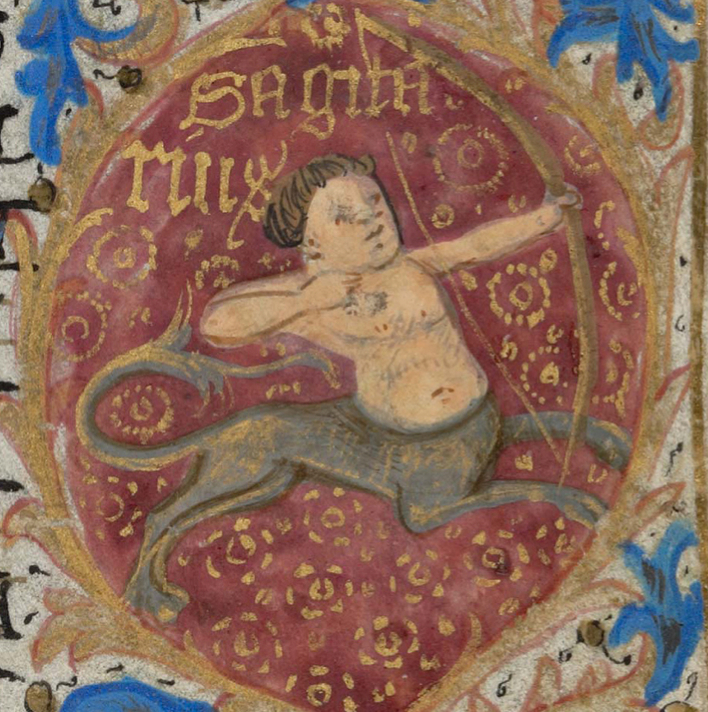
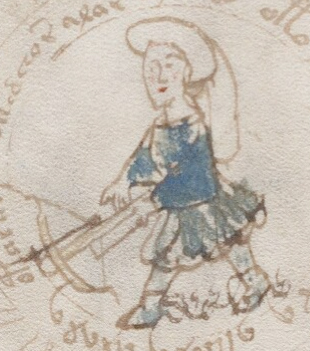 The clustering of legged crossbow symbols isn’t sufficient evidence to assume Beinecke 408 was created in S.W. Germany or Switzerland (there are some perplexing oddities in the manuscript that are not typical of this region), but It’s certainly possible. The style of the plant illustrations and the handwriting on the last page are similar to others originating in the same general area (including northern Italy). The manuscript’s provenance, which includes Czech and Italy, and the organization of the content (and materials used to create it), also suggest a central European/Holy Roman Empire origin, so it may be that the person (or persons) who authored the Voynich Manuscript was born there or migrated to the area.
The clustering of legged crossbow symbols isn’t sufficient evidence to assume Beinecke 408 was created in S.W. Germany or Switzerland (there are some perplexing oddities in the manuscript that are not typical of this region), but It’s certainly possible. The style of the plant illustrations and the handwriting on the last page are similar to others originating in the same general area (including northern Italy). The manuscript’s provenance, which includes Czech and Italy, and the organization of the content (and materials used to create it), also suggest a central European/Holy Roman Empire origin, so it may be that the person (or persons) who authored the Voynich Manuscript was born there or migrated to the area.
If you have seen any examples of Sagittarius with legs and a crossbow in documents from the 15th century or earlier that are not scanned and uploaded to the Web, I would be interested in hearing about them.
J.K. Petersen
Postscript: I should mention that I didn’t include examples of Sagittarius with goat legs (of which I found several examples, one from about four centuries before the VM), because it struck me that the Pan-like representation of Sagittarius was as distinct from Sagittarius with human legs as it was from Sagittarius as a centaur, individual enough that it deserves a separate article.
2016 Jan 11 Postscript: It was brought to my attention that David Jackson has located a further example of Sagittarius with what appears to be a crossbow, described in his article here.
© Copyright 2015 J.K. Petersen, All Rights Reserved
